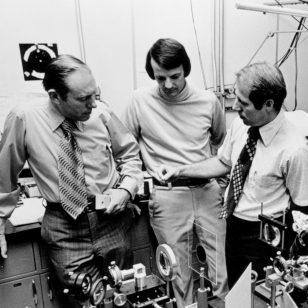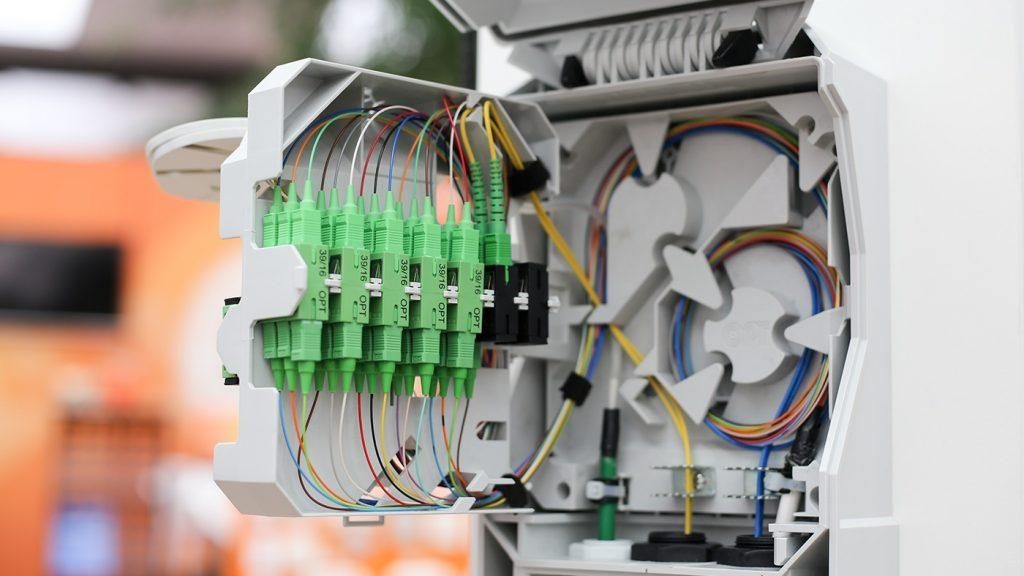It is astonishing how fibre networks have brought all of us closer and made our lives even better by enabling next-gen applications and use cases.
Think of virtual and augmented reality becoming mainstream, telemedicine saving millions of lives, or self-driving cars on every street. That is but a modicum of the future that end-to-end global fibre networks and 5G are creating. Already, thousands of miles of undersea and overland fibre networks connect continents, form the backbone of today’s internet, and power our increasingly digital lives.
So, where did it all begin, and where is the fibre world heading? Let us dig deeper.
Evolution of Fibre Optics

Fig 1: Evolution of telecommunications
Image credit: link.springer.com
Optical fibre has been the backbone of the global telecommunications industry through its evolution across different generations. With every advancement of g (i.e., 2g, 3g, 4g, and 5g), more and more fibre has been pumped into the network to facilitate better speeds, capacity and lower latency.
But how did fibre optics communication evolve to this stage? Let’s turn around some history pages and witness the magic of light through fibre optics.
The 1950s: Scientists at Corning Glass Works developed the first low-loss optical fibre by drawing glass through a small hole to create a thin, transparent fibre. This was a significant breakthrough, as it allowed light to be transmitted over long distances without significant loss of intensity. This was the first step towards the development of practical fibre optic systems.

Fig 2: Corning develops the first low-loss optical fibre
Image Credit : corning.com
1960s–1970s: Researchers at Bell Labs developed the first working optical fibre communication system, which was able to transmit voice and data over a distance of several miles. This was a major milestone in the history of fibre optics, as it demonstrated the feasibility of using optical fibres for telecommunications. By the 1970s, Corning was able to reduce fibre attenuation drastically from greater than 1000 dB/km to 20 dB/km.

Fig 3: Modified chemical vapour deposition process was developed to mass produce low-loss optical fiber
Image Credit : risb.net
1980s: The fibre attenuation was further reduced to below 1 dB/km with the development of InGaAsP lasers. They were proficient at emitting light at 1300 nm, thus paving the way for single-mode fibres for longer-distance transmission.
Beyond 1980s: The decades before and after the turn of the millennium saw the introduction of game-changing fibre optic technologies. Step-index and graded-index fibres came to the fore. Then, there was the development of wavelength division multiplexing (WDM) and optical amplifiers that catered to faster data transmission and massively increased capacity. 2G and subsequent networks were born, with fibre at the heart of it all.
Present day: Commercially available systems can currently transmit data at 100 GB/s over distances of more than 1000 km using single-mode G.652 fibre optimised for operation at a 1310 nm wavelength. This fibre type has become the accepted practice for long-haul and metro-area networks. Access networks have evolved to improve overall performance as data transmission demands have increased. The next frontier for access networks is in the works, focused on bringing optical connectivity to the ‘last mile’ using FTTH. We are also witnessing the rise of bend-insensitive fibres (G. 657). By minimising macro-bending loss, they help address the specific challenges of tight bends that are frequently required in limited spaces of homes and buildings.

Fig 4: Inside view of a modern FTTx cabinet
Image Credit : stl.tech
And where is this fibre evolution now headed? As network demand scales up rapidly, we will see the development of optical fibre cables with smaller diameters, lower attenuation, and improved resistance to macro-bending, allowing for the transmission of high-speed data with minimal signal distortion.
Futuristic Fibre Designs
The future of fibre is bright as we are only witnessing the tip of the iceberg in breakthrough fibre designs.
While multicore fibre continues to take the industry by storm, innovations are also being made in the current generation of highly compact ultra-large fibre count cable. Inter-bonded ribbon (IBR) technologies, micro/macro bend insensitive fibre technology, and compact coating diameter fibres (< 200 μm) are already making fibre designs much sleeker than ever. Further disruption will arrive through using materials that are lighter in weight, lower in form factor and density, and more convenient to deploy.
So, what upcoming revolutionary fibre designs do we see when we gaze into the crystal ball? Here are some with very promising results:
1. Larger Core Area: The optical fibre nonlinearities can be significantly reduced by increasing the effective mode field area. This can allow system designers to increase the launch power of WDM signals increasing OSNR and thus either allowing for more transmission distance or higher bit-rate signals or both.
2. Lower Fibre Attenuation: Lower fibre attenuation can lead to higher OSNR in optically amplified systems facilitating higher bit rate communications. It can also allow longer repeater spacing or higher system margins.
3. Multi-Core Fibre: The information carrying capacity in single fibre can be dramatically increased by having more single modes cores with a common clad region. In the multi-core fibre, the data transmission capacity increases directly proportional to the number of fibre cores.
4. Few-Mode Fibres: In few-mode fibres, a few modes can be excited and the transmission capacity in a single-core fibre can be increased. However, such systems can support only a limited transmission distance due to intermodal dispersion and crosstalk.
5. Multi-core-Few Mode Fibres: By combing multi-core and few-mode fibres, one can dramatically increase capacity in a single fibre (ex. 1 petabit/s). These fibres will be suitable for future access networks.
To know all about STL’s Optical Connectivity Solutions, click here.
FAQs
i) What is optical fibre?
An optical fibre is a fibre manufactured using glass or plastic. Its identifying characteristics are that it is transparent, flexible, and extremely thin (comparable to a human hair). Optical fibre uses light to transmit data over long distances. They are used in telecommunications and computer networking because they can transmit large amounts of data with little loss of signal strength across massive distances. They are also used in medical equipment, scientific instruments, and other applications where high-speed, high-bandwidth data transmission is needed.
ii) What are the three major components of fibre?
There are three major components of optical fibre: the core, the cladding, and the buffer coating.
- The core: The central part of the optical fibre where light is transmitted. It is typically made of glass or plastic and is designed to have a specific refractive index that allows light to be guided through the fibre.
- Cladding: Cladding is a layer of material that surrounds the core and has a lower refractive index than the core. The cladding is designed to reflect light that travels into the core, which keeps it confined to the core and prevents it from spreading out.
- Buffer coating: The buffer coating is an outer layer of material that protects the optical fibre from damage. It is typically made of a tough and durable material such as acrylate or polyethylene. The buffer coating is also used to strengthen the fibre and make it easier to handle.
All three components work together to transmit light through the fibre, allowing it to travel long distances with minimal loss of intensity. The properties of the core, cladding and buffer coating are carefully engineered to support the transmission of light and protect the fibre from damage.
iii) How is a multimode fibre different from a single-mode fibre?
A multimode fibre and a single-mode fibre are different types of optical fibres that are used for different applications. The main difference between the two is in the size of the core and the number of modes of light transmitted through the fibre.
- Multimode fibre: Has a larger core diameter than a single mode fibre, typically in the range of 50 to 100 µm. This allows multiple modes, or paths, of light to travel through the core at different angles. This results in a higher numerical aperture (NA) and a larger acceptance angle, which allows for easy coupling of light into the fibre and a larger core allows for cheaper manufacturing and less precise alignment. Typically used in short-distance communications such as in data centres, LANs, etc.
Single-mode fibre: Has a much smaller core diameter, typically around 8 to 10 µm. This means that only one mode, or path, of light, can travel through the core at a time. This results in a lower NA and a smaller acceptance angle, which makes it more difficult to couple light into the fibre, and more precise alignment is required. Typically used for longer-distance communications, such as in telecommunications networks and internet service providers.















